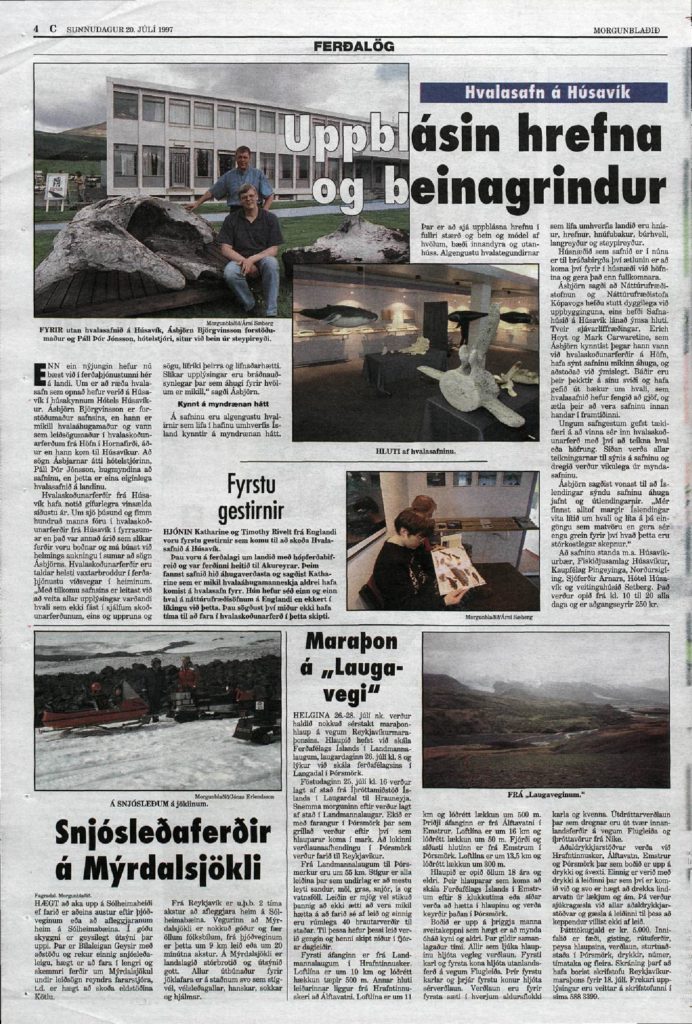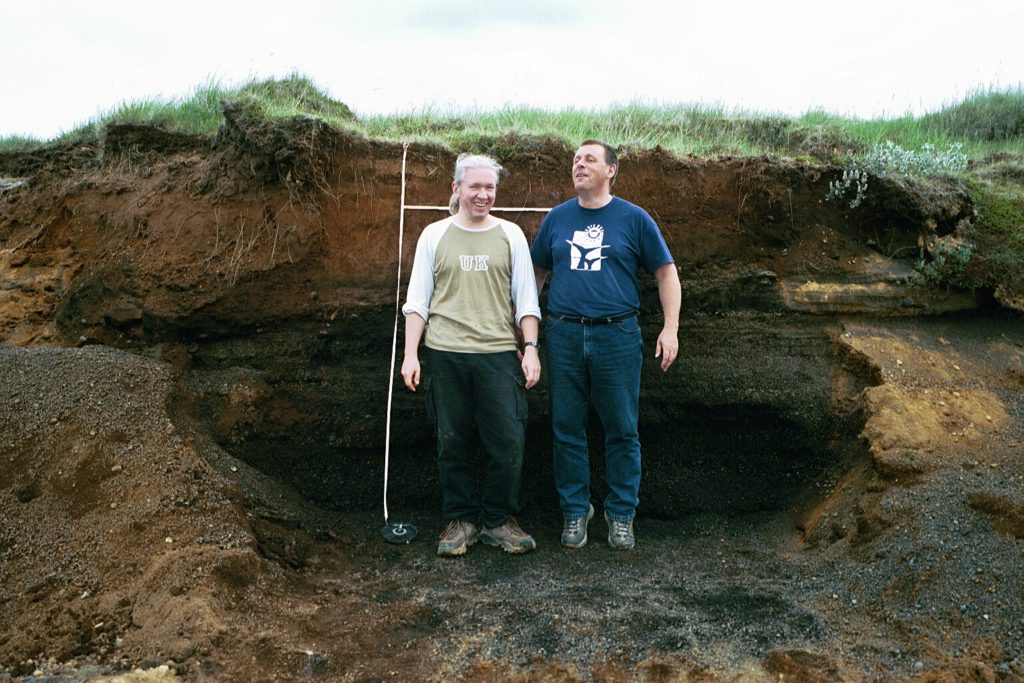Ágrip úr sögu Hvalasafnsins: 1997
Forveri Hvalasafnsins á Húsavík var lítil sýning í sal félagsheimilisins á efri hæð Hótels Húsavíkur sem opnaði árið 1997. Á þessum tíma voru áætlaðar hvalaskoðunarferðir í boði þriðja árið í röð frá Húsavík og fékk hótelstjóri staðarhótelsins Páll Þór Jónsson þá hugmynd að opna sýningu á hótelinu tileinkaða hvölum. Ásbjörn Björgvinsson var fenginn til að leiða verkið og flutti hann norður ásamt fjölskyldu sinni í janúar 1997.

Ásbjörn fór til Englands á Breska náttúrusögusafnið á fund Richard Sabin sýningarstjóra safnsins í þeim tilgangi að læra að verka af hvalbeinunum en þar er að finna stærsta beinagrindasafn heims. Richard Sabin hefur verið í tengslum við safnið og Húsavík allar götur síðan. Hann stjórnaði til að mynda aðgerðum við uppgröft hvalbeina á Keflavík á Ströndum árið 2001 en þeim fundi er gerð betur skil í einu af sýningarrýmum safnsins.

Richard